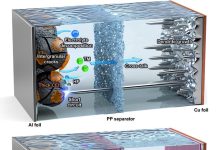
Fire has been a part of human history for thousands of years.
It helped us cook, build tools, and power engines. Now, it’s playing a surprising role in one of the most advanced areas of modern science: nanotechnology.
Nanoparticles are tiny materials—tens of thousands of times smaller than the width of a human hair—that are already used in everything from car tires to medicine.
For example, the black powder that strengthens tires, the white pigment in wall paint and pills, and even some materials used in internet cables are all made from fire-produced nanoparticles.
These particles are also being used in cancer treatments and sensors that can detect diseases like diabetes through a person’s breath.
Scientists are using a method called flame spray pyrolysis to make these nanoparticles. It works by burning flammable chemicals that contain certain metals.
The fire causes the metals to turn into oxides, which then quickly collide and grow into nanoparticles in just milliseconds.
The size and quality of the particles depend on how long they stay in the fire. Researchers can also mix different chemicals to create more complex nanoparticles.
What makes fire such a powerful tool is that it’s simple, cheap, fast, and scalable. In comparison, the more common “wet chemistry” method—mixing chemicals in liquids—takes a lot of time and effort, and is costly and difficult to scale.
Some high-value nanoparticles like quantum dots, which are used in solar energy and medical imaging, can cost up to $45,000 per gram when made through wet chemistry.
But if researchers can figure out how to make them using fire, the cost drops significantly, making large-scale use more realistic.
Fire isn’t perfect. It also creates harmful byproducts like soot, which contributes to global warming and human diseases.
But the same fire-based technologies can help us study and even reduce these emissions. One study using flame spray pyrolysis showed that changing the way jet fuel burns can reduce soot by over 90 percent.
Fire-based nanoparticle research is also opening new doors. For example, scientists are now trying to use fire to make graphene, the strongest material at the nanoscale. Graphene could be used in future 3D printing technologies and strong, lightweight materials.
In medicine, there’s still a lot to explore. So far, only about 30 types of nanoparticles are approved by the FDA, mostly for injections.
But scientists believe that fire-made nanoparticles could one day lead to new kinds of medicines, including pills, that are more effective and easier to take. Fire, it seems, still has the power to change the world.



